ESE Bin Ye’s group published advanced research on quantitative assessment of climate risks at the urban level
Dec 02, 2020
As the city expansion speed grows faster and faster, the cities are the major contributors to global climate change. However, they have been heavily affected by the related environmental problems.

Assessing and preventing risks associated with climate change is crucial to sustainable urban development. Still, most of the previous studies focused more on assessing climate change risks at the global, national, or regional dimensions, and the reviews on the urban scale have just begun.
Recently, a group led by Dr. Bin Ye, Visiting Assistant Professor of School of Environmental Science and Engineering (ESE) at SUSTech, systematically combed the latest research progress and future research prospects of urban climate change risk assessment.
His paper was published in the top journal in environmental and sustainable energy, Renewable and Sustainable Energy Reviews(IF 12.110), entitled “Research on Quantitative Assessment of Climate Change Risk at an Urban Scale: Review of Recent Progress and Outlook of Future Direction. “
According to his research, cities account for two-thirds of global energy consumption and 70% of man-made GHG emissions. Due to the high concentration of inhabitants, wealth, and infrastructures, cities are both the major contributors and victims of global climate change. The article makes a critical literature review of recent studies on urban-scale climate change risk assessment and looks forward to the future research directions and priorities on this basis. Figure 1 depicts the potential risks posed by current climate change to global cities.
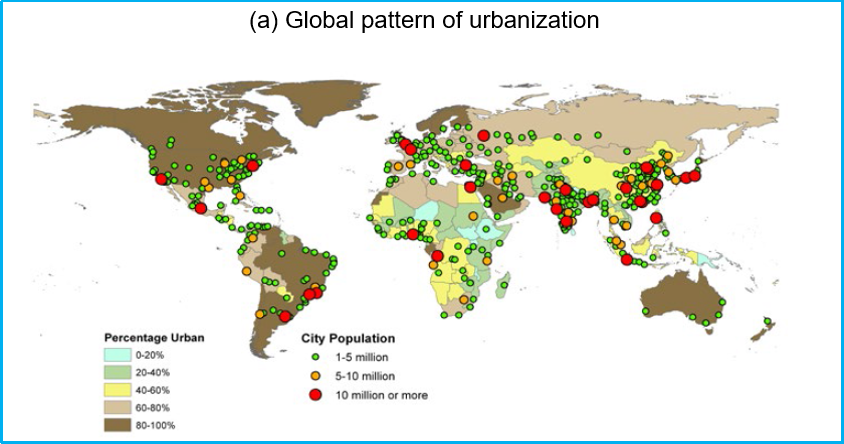
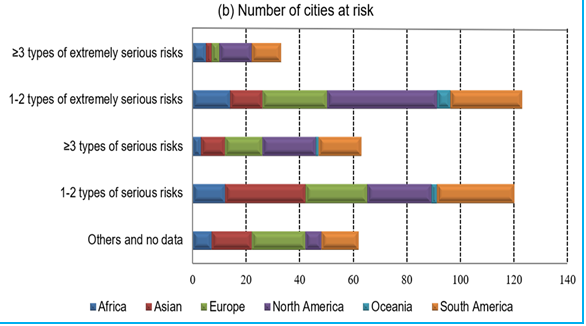
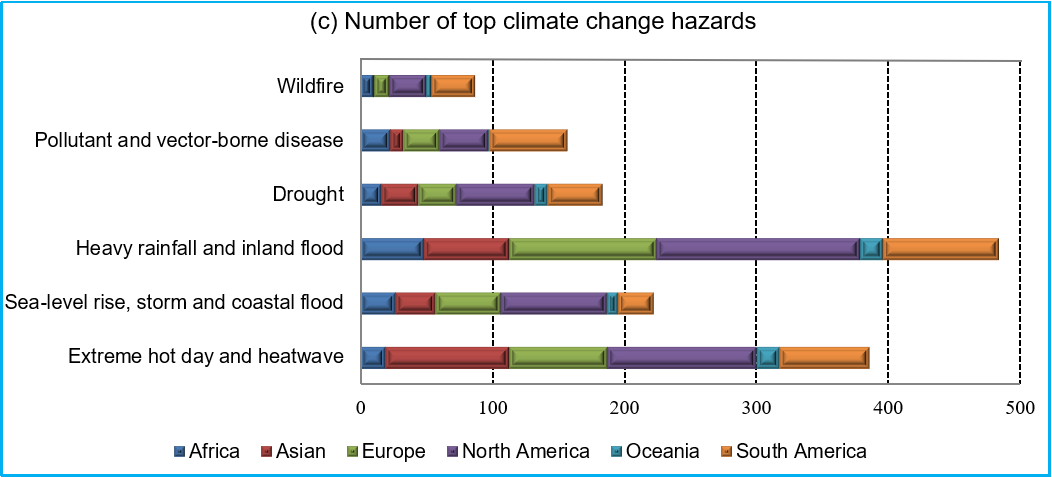
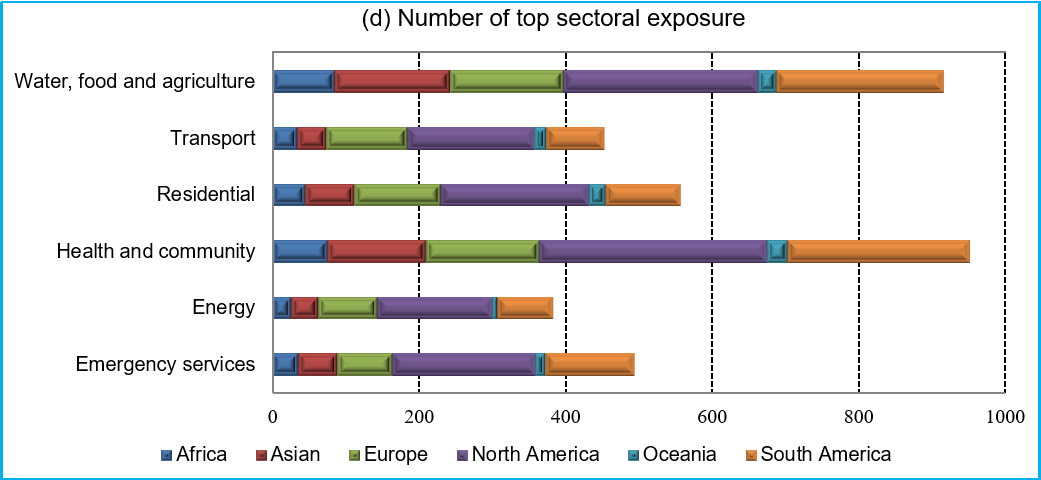
Figure 1. Climate change risks to cities. (a) Global pattern of urbanization extracted from the World Cities Report 2016, (b)the number of cities at different types and degrees of climate change risk, (c) the number of top climate hazards affecting cities, and (d) the number of top urban sectors exposed to climate hazards. (b)–(d) are derived from raw data in city climate hazard survey, Carbon Disclosure Project.
The study consists of two parts, as shown in Figure 2. The first part summarizes, classifies, discusses, and reviews the relevant research on quantification and assessment of urban climate change risk. This study found that from climate change on a global scale to the city scale consists of four core steps of risk assessment, in turn, is the simulation of climate change on a large scale and urban microscopic simulation and prediction of climate, vulnerability assessment of city climate change, and the city under the condition of complex and uncertain climate change risk comprehensive evaluation. In recent years, as downscaling, revised deviation, the simulation of economic and social development, the micro climate prediction, model coupling, vulnerability assessment, uncertainty analysis, risk identification, risk quantification model and the development of technology, such as accurately quantify and risk assessment of urban-scale climate change has made significant progress, but still faces severe challenges, including how to realize the moderate scale of climate change and urban scale simulation of seamless coupling? How to characterize complex climate change events? How can vulnerability assessments include the likely non-market, long-term, and sustainable impacts of climate change? How to reflect the transmission of climate change risks between urban systems and between different cities?
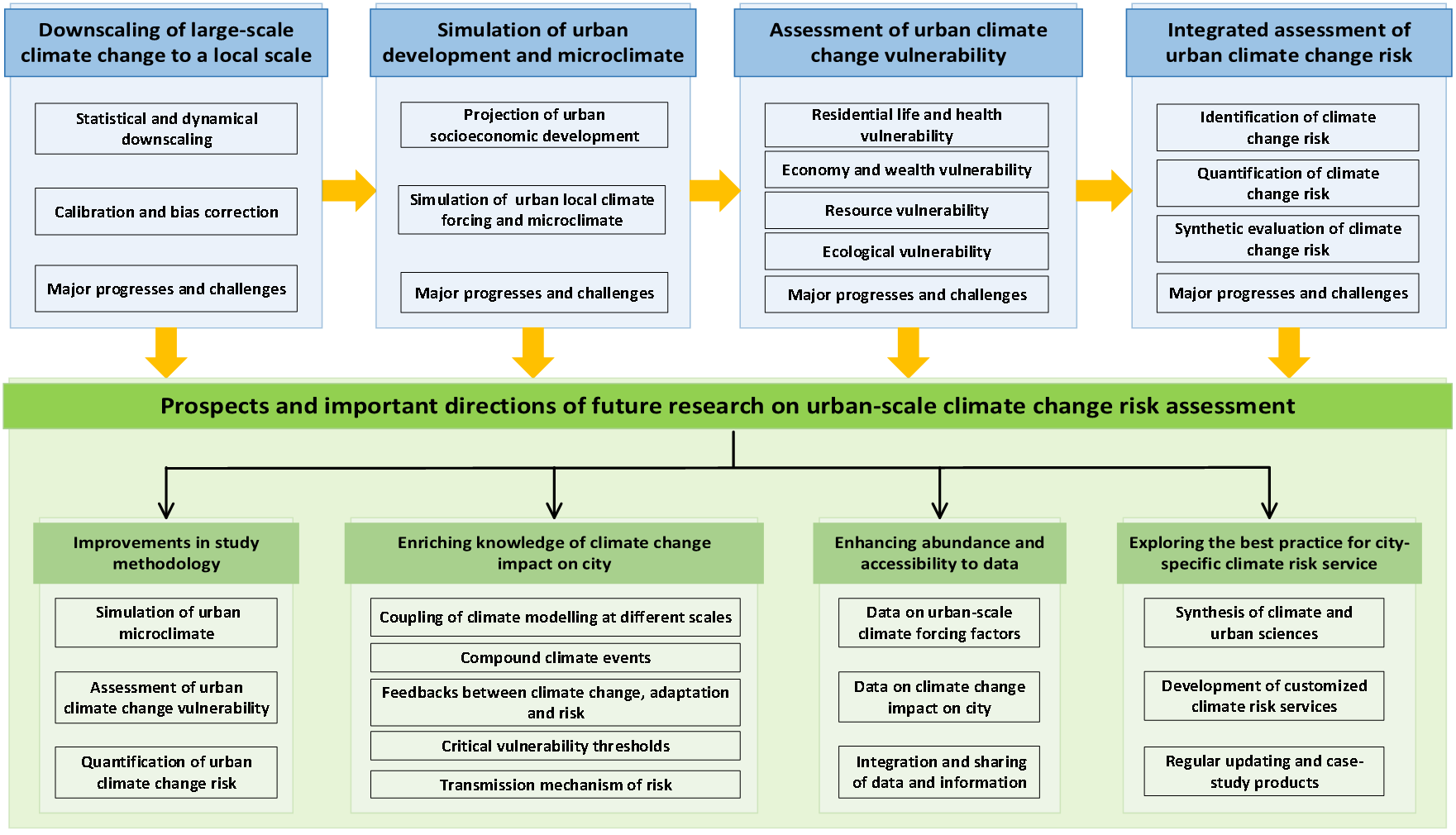
Figure 2. The overall framework of the paper
On the basis of the literature review, the second part of this study combined with the actual needs of urban climate change risk assessment and management and proposed suggestions for improvement of existing research from four directions. First, there is a need to improve the research methods and models, including simulation of local climate driving force on multiple time scales, regional and urban climate simulation model of two-way coupling, the form of climate change vulnerability function setting, climate adaptation effects evaluation, multivariate climate simulation calibration, the multi-dimensional comprehensive evaluation model of climate risk of unified accounting and fund, etc. Second, the need to rich on the impact of climate change on urban system related to cognition, including global, regional and urban scale associated with climate change, the formation and influence of complex climate events, the interactions among climate change – climate adaptation – climate risk, key thresholds of climate vulnerability in different urban systems, as well as the inner cities and climate change risk transmission mechanism between the two cities. Third, there is a need to improve the abundance and availability of data, including urban-scale emissions inventories of greenhouse gases and related pollutants, high-quality spatial data, thresholds for climate vulnerability, data standardization, and Web-based data sharing platforms. Fourth, the need to explore urban climate risk service best practices, including building climate risk by experts and stakeholders in a joint working group, in view of the different types of users with easy to understand and apply the climate risk services, and according to the data and demand change constantly update and upgrade the climate risk service products, as shown in figure 3.
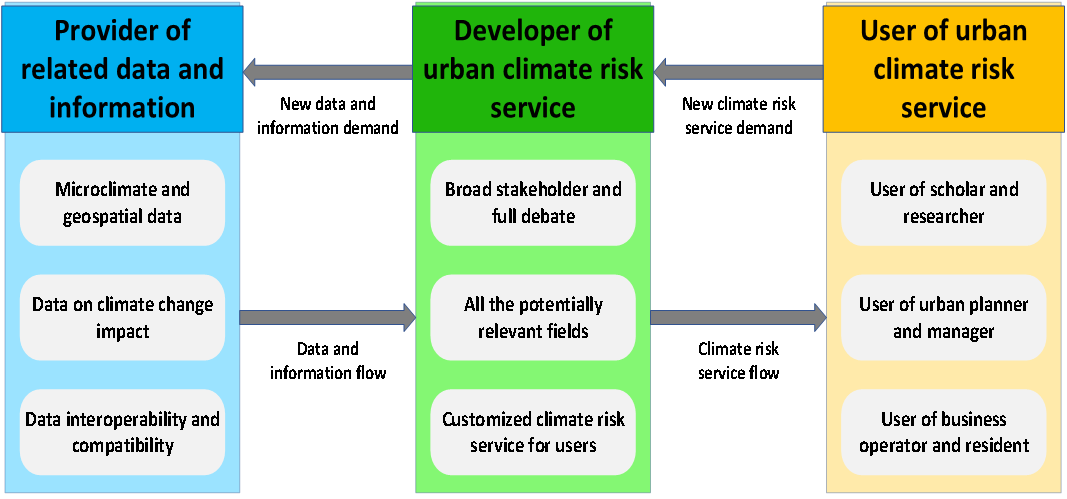
Figure 3. Providing and constantly updating and upgrading urban climate risk services for different types of users
The first author of this paper is Dr. Bin Ye and Southern University of Science and Technology is the first author unit. Dr. Jingjing Jiang, Associate Professor of Harbin Institute of Technology (Shenzhen), Prof. Junguo Liu(ESE, SUSTech), Prof. Yi Zheng(ESE, SUSTech), and Dr. ZHOU Nan from Lawrence Berkeley National Laboratory participated in the discussion, writing, and revision of the paper.
This project is supported by the Key Research and development project of the Ministry of Science and Technology, the National Natural Science Foundation of China, and the Natural Science Foundation of Shenzhen City.
The article links:
About the author:
Dr. Bin Ye is a visiting assistant professor and faculty secretary of the School of Environment and Engineering of Southern University of Science and Technology. In the past two and a half years since he joined the School, he has published 12 papers on high impact factors in top environmental and Sustainable Development journals, including Renewable and Sustainable Energy Review (IF 12.110), Applied Energy (IF 8.848), Resources, Conservation & Recycling (IF 8.086). Dr. Ye has published more than 60 research papers and presided over longitudinal research projects such as national Natural Science Foundation of China, Natural Science Foundation of Guangdong Province, Natural Science Foundation of Shenzhen and China Postdoctoral Science Foundation.
Latest News
Related News












